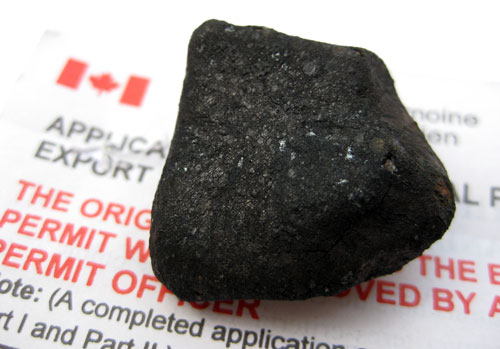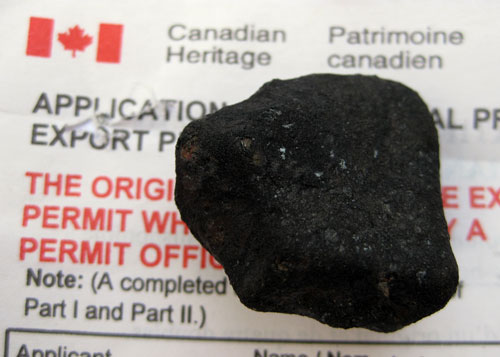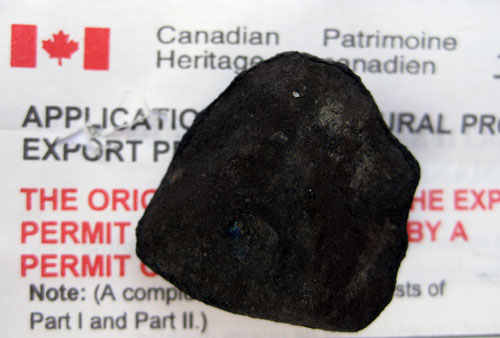


- Meteorites For Sale - Found A Meteorite? - Monthly Favourite - Meteorite Information - Classification List - Meteorite Collection - Media Centre - Home - Search - Site Map - Contact |
|
Buzzard Coulee Buzzard Coulee is among one of the most famous and well documented meteorite falls. The meteor was witnessed over a large area of Canada near Edmonton on November 20th, 2008. The first piece was discovered about a week after the fall by a research and recovery team from the University of Calgary. Since that time, Buzzard Coulee has been studied and was classified as an Ordinary Chondrite, H4. Weathering levels vary depending on where and when the stones were found but the majority would be W0-1. This meteorite also has a moderate shock rating of S. The Total Known Weight officially stands at 41kg but it is likely higher. Hundreds of stones have already been recovered but due to Canada's restrictions on export, much of the material is likely to remain in Canada. Any specimens exported must have an export permit from Canadian Heritage such as the individual below. The Meteoritical Bulletin entry for Buzzard Coulee states the following: "A bright fireball was widely observed across Alberta, Saskatchewan and Manitoba during late twilight on November 20, 2008. The fireball and subsequent dust trail, or shadows cast by the fireball, were recorded by all-sky and security video cameras establishing that its brightest portion occurred from 17:26:40 to 17:26:45 MST. The fireball travelled approximately north to south with an elevation angle of ~60°. Abundant sonic phenomena were reported including anomalous sounds, explosion booms, sonic booms from individual fragments and whirring sounds interpreted as produced by individual fragments falling to ground; the fireball’s explosions were also widely recorded by Comprehensive Test Ban Treaty infrasound stations establishing an energy release of approximately one third of a kiloton, indicating an original meteoroid mass of ~10 tons. Interviews of eyewitnesses and crude calibrations of security cameras constrained the fall region and the first search attempt led to meteorites being recovered off the ice of a manmade pond late on November 27, 2008. Subsequent searches led to recovery of more than one hundred individual fragments before December 6 when increasing snow cover made further searching unproductive. A strewn field at least seven kilometers long and approximately three km wide with a wind drift tail of an additional three km eastwards has been crudely outlined." The 17.2g Oriented Individual below, has an extraordinary feature on the trailing side. A bright, metallic blue inclusion is visible at the surface of a shallow divot. This feature retains the same colour and lustre no matter what type of light source is used or at what angle the stone is held. The most likely candidate for this blue mineral is Chalcopyrite. This 17.2g Oriented Individual was found by IMCA Member, Mark Murphy on April 29th, 2009. It is now part of the Meteorites Australia Collection (MA.10.0001).
Click here to view the archive of the Monthly Favourites
|











